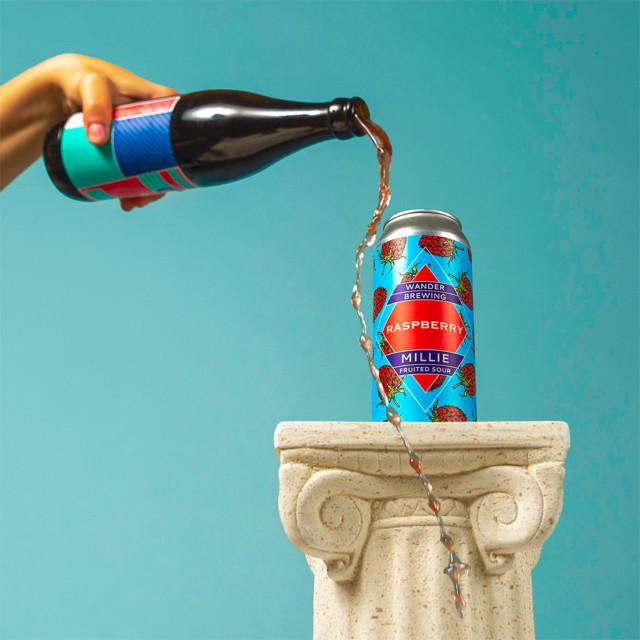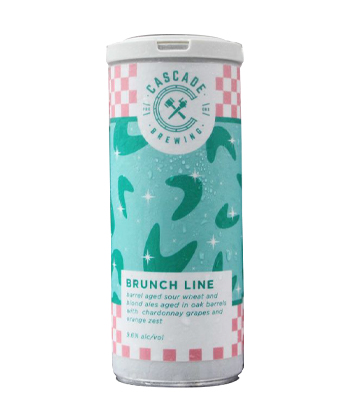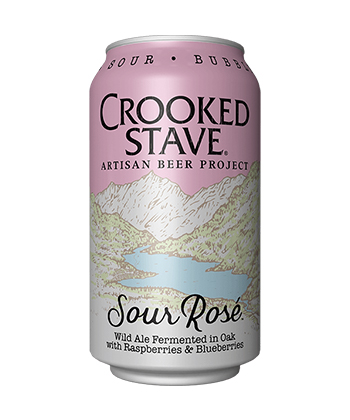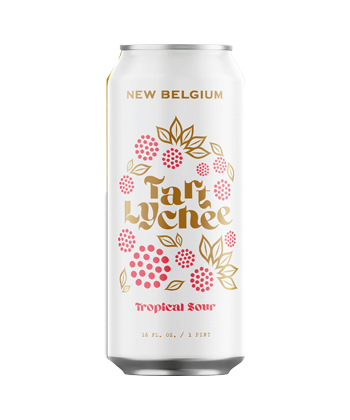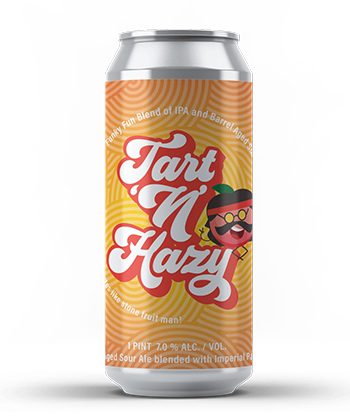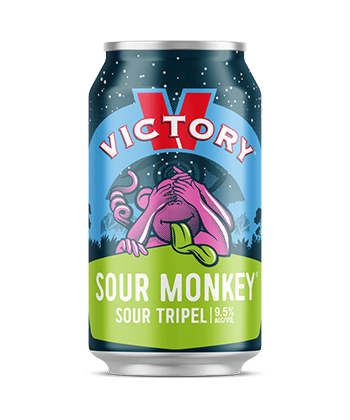This month, VinePair is exploring how drinks pros are taking on old trends with modern innovations. In Old Skills, New Tricks, we examine contemporary approaches to classic cocktails and clever techniques behind the bar — plus convention-breaking practices in wine, beer, whiskey, and more.
Consumers face a dilemma every time they pick up a 750-milliliter bottle of beer sealed with a cork and cage: save it to share with others, or drink it all in a single sitting? With restrictions on gatherings once again thrown in the mix due to a global pandemic, finding more than one person for a bottle share gets even more complicated. Some beer professionals believe this is contributing to less demand for a big, pretty bottle of sour beer with dinner.
“Large-format bottles don’t really sell well anymore,” says Ethan Hibbs, sales representative for Lighthouse Beer & Wine, a 22-year-old bottle shop in Wrightsville Beach, N. C. As the refined packaging of a cork-and-caged bottle falls out of favor, it’s the can that seems to be picking up the slack. “Cans have skyrocketed,” Hibbs says.
A more compact vehicle to carry individual servings of sour beers responds not only to the consumer’s drink-or-cellar dilemma, but to a growing market for canned beverages. And with consumers heading outdoors this summer, cans make a perfect companion on hikes and park picnics.
“It doesn’t take much to just walk through a grocery store, go to a bottle shop or something, and see the growing can section,” Kevin Martin, head of brewing operations for Cascade Brewing in Portland, Ore., says. Cascade, a brewery renowned for its barrel-aged sour program traditionally packaged in large-format bottles, has seen this demand for cans increase, Martin says. “We would hear a lot of feedback from our customers, from our retailers, our distributors, just asking for cans in general.”
In response to that common refrain from consumers and wholesalers alike, breweries like Cascade and several other renowned producers began exploring packaging options. It isn’t as easy as simply shifting from glass bottles to aluminum cans.
Large-format bottles have long been the standard for traditional sour packaging. It serves an aesthetic purpose by elevating the beer style to look like a beverage that belongs in a fine-dining setting but it also has a functional purpose.
The method originated as an effective way to contain highly acidic sour beers. Often paired with cork-and-cage closures, the 750-milliliter size gained popularity with Belgian sours such as lambic and gueuze that often benefit from bottle conditioning or aging.
“Bottle conditioning and glass cork and cage is really a great format for cellaring [and] preserving the beer,” notes Martin. “I think it’s really more of a refined presentation.”
On the other hand, cans have only recently become more accepted. Previous iterations of the style often impacted beers with off-flavors. Recent innovations in canning resolved those issues but it would be years before it lost its reputation as a cheap alternative to bottles.
Any brewer spending years or even months barrel-aging a sour avoided canning both because of its image among consumers and the many challenges they’d face maintaining a specific flavor profile. Not to mention that the acidity found in sour beers could eat away at the standard lining often used in beer cans.
Even in the midst of challenges and traditional perceptions, breweries have gone ahead with canning sour beer.
Who dares can a complex sour?
The concept of canning tart beer styles such as goses and other kettle or “quick” sours has been possible for several years. These types of sours are brewed with lactobacillus to quicken the souring process and don’t require the time and effort of barrel aging.
Several breweries tried and erred, navigating challenges like exploding cans in order to discover the best packaging method, leading the way for more cautious breweries.
Boulevard tested the waters when it released its first canned sour, a gose, in 2018. The brewery, which had just purchased a brand new canning line, took a fan favorite, Hibiscus Gose, and encased it in aluminum.
Clearly, the brewery saw promise and continued the momentum with two more canned sours: Chill Vibes, a sour ale with cucumber; and Berry Noir, a year-round sour entry from the brewery, a dark-fruited sour.
Breweries including Destihl Brewery in Illinois, and many other breweries, have already packaged kettle sours in cans.
But when esteemed producers such as those known for developing traditionally crafted sours — the ones that spend months or even years souring in a wooden barrel — arrived at the canning line, beer geeks took notice. “It’s a fairly new line to cross for sour beers,” Martin says.
In January 2020, Cascade, a brewery that has become legendary for its barrel-aged sours, released its first canned sour in 22 years of brewing. By the end of the year, Cascade had incorporated eight 12-ounce cans and three 250-milliliter cans to its lineup. One popular example, a 9.8 percent barrel-aged sour blonde ale with cocoa, cardamom, and orange zest called Cocoa Cardamom, comes in the latter packaging.
Martin explains that Cascade has the agility to shift with the market and dip its toes into canning while still offering bottles to those who want to cellar. Similarly, New Belgium Brewing, which first began a wood-aged souring program in 1998, introduced cans alongside its bottles in 2019.
The Fort Collins, Colo.-based brewery canned its first wood-aged sour for the 2019 Tour de Fat, a yearly bike-centric festival held in three different cities, as a limited release. This was soon followed by a mixed fermentation dark sour called Where I Live, a collaboration with Denver’s TRVE Brewing Co. A more recent canned sour, Blackberry Black Tea Sour, blends a foeder-aged dark sour with a tea-infused golden ale. Earlier this summer, the brewery released its canned collaboration, Oh, Hi!, with hard kombucha brand Flying Embers, which pairs the latter’s Original Essence Kombucha with the former’s wood-aged golden sour.
The move was once again inspired by the market. “[It was] simply due to the overwhelming consumer preference shift from bottles to cans, especially for fruit-forward sours,” says Andrew Emerton, New Belgium’s senior brand manager for specialty and innovation.
Once brewers made the decision to send their sours down the canning line, they had to figure out how to do it well. “Sour beers have much higher acid levels, lower PHs; our beers tend to be high-alcohol,” says Martin. “Those are pretty hard conditions to throw at a canning line.”
He continues, “There’s a really thin liner on the inside of a can that actually separates the beer from the aluminum but most liners today are being made out of a material that can’t necessarily stand up to the harsher conditions of a sour beer.” To address this, the production team sought out cans with an epoxy lining, a more robust option but also a little harder to find.
The team at New Belgium found an additional hurdle in its blending process: “These [canned sour/mixed ferm beers] are usually blends, meaning they range from 35 percent to 75 percent wood beer blended with a base, non-sour beer,” says Emerton. “Blending beer is never easy and fermenting with fruit can always create a range of issues” in the packaging stage.
(Emerton also hit on the fear of exploding cans, noting that the brewery has the luxury of pasteurizing prior to packaging, which allows its sours to safely sit on a shelf without that risk.)
Sour cans fit right in your hand
The end result of canning sours is a more digestible serving size that is also portable. Martin notes that Cascade’s 250-milliliter cans deliver roughly 8 ounces of sour, which would be the same serving size a guest to the brewery’s barrel house would enjoy. “This gives us the opportunity to give someone a nice single serving or split it between two people still,” he explains. “It’s just the right amount for a single serving.”
In addition to size, cans also come with the benefit of being recyclable and more sustainable for the environment. In areas where the outdoors are central to many beer lovers’ lifestyles, “in terms of being active, sours in cans do make a lot of sense,” Hibbs says.
The market has definitely responded to the packaging as well. “We couldn’t even offer Blackberry Black Tea at our taprooms because we were over-allocated with our distributors,” says Emerton.
Emerton expects the demand for canned sours to continue growing, and points out that several popular beverages have high-acid profiles and emphasize fruit flavors. “To me, it’s a natural progression from hard seltzers,” he says.
5 CANNED SOUR BEERS TO TRY
Cascade Brewing Brunch Line
A nod to notoriously long lines at Portland’s many brunch institutions, Cascade’s Brunch Line draws inspiration from the Mimosa. A blend of sour wheat and blond ales, the beer spends up to two years in Chardonnay wine barrels, then gets an injection of fresh orange zest before it’s packaged in 250-milliliter cans.
Crooked Stave Artisan Beer Project Sour Rosé
This Colorado sour brewery aged its Sour Rosé on blueberries and raspberries in large oak foeders. The sour fruit flavors combine with a bubbly sensation in 12-ounce cans.
New Belgium Brewing Tart Lychee
Tart Lychee began amassing fans when it first appeared in the Fort Collins, Colo., tasting room in 2009. After that, it returned in bottles and earned cult status then took a hiatus before the brewery released the beer, which combines a wood-aged golden sour with the sweetness of lychee fruit and the warmth of cinnamon, in 16-ounce cans.
Epic Brewing Tart ‘N’ Hazy
The brewers at Epic brought together two popular styles with Tart ‘N’ Hazy: wood-aged sour and Hazy IPA. The hops lead with each sip followed closely by the tart pinch of the sour beer. Available in 16-ounce cans, this brew puts a new spin on the sour IPA style.
Victory Brewing Co. Sour Monkey Tripel
The brewery, based in Downingtown, Pa., crafts an entire lineup of Belgian-inspired ales featuring “monkey” in the name. Sour Monkey takes its Belgian yeast through a souring process, resulting in a tart and citrusy beer that clocks in at 9.5 percent ABV. While not a traditional wood-aged sour, it’s still 12 ounces of serious pucker.
This story is a part of VP Pro, our free platform and newsletter for drinks industry professionals, covering wine, beer, liquor, and beyond. Sign up for VP Pro now!
